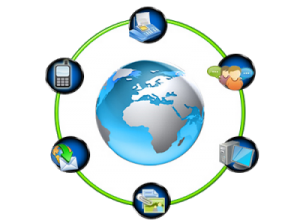Share This Post:
Crash course guide to Customer Relationship Management (CRM)
The time when a company decides to move to CRM (Customer Relationship Management) tools marks their progress to professionalism and profit in multiple ways. This guide will give you guidelines for companies who are thinking about this critical step in their development.
Before the advent of computers, salespeople used a combination of manual tools to track prospects and their multiple contacts with those prospects needed to turn them into customers. These “tools” included yellow tablets, stacks of business cards with notes written on the back all bound together by rubber bands, and Rolodex cards.
Companies planning to grow and succeed realize customers are the lifeblood of their business in a more profound way than when they started, and properly managing customers becomes the key to long term growth. They begin to notice certain signs that indicate a step up to CRM is necessary in order to improve the value of them to their customers, and of their customers to them.
The three foundations of a good CRM system are people, process, and technology. Too many focus on just the technology and spend months analyzing minute details of competing software applications while their sales drift aimlessly. Smarter companies analyze the sales processes they have now, make note of where improvements are needed, and start building new processes with employee training as well as the software application. Technology is only one of the three successful lets of a CRM system.
Take time to define the expectations each department has of the new process, make sure they align with other departments and the capabilities of the software involved, and make sure those who aren’t behind the new project don’t create unmanageable expectations. Keep a close watch on the software vendor as well, as their enthusiasm for their product may outrun the abilities of your particular installation. One way to solidify the expectations of all the CRM stakeholders is to carefully examine and record the sales management processes that are place now.
Here’s the real-world segue from Expectations to the Transition to a CRM system: you will need to expect a bumpy ride. The process rides a roller coaster: it’s terrible, it’s getting better, it’s worse than we ever thought, we’re finally home safe. The sales department, the group most affected by the new CRM system, suffers the most. Those who have used other systems will complain because the system at your company is different than what they know. All of this hassle for your transition time will be cured by training and with time. They will get to know the software as they used it.
Finally, all customer information will be in one place, including social media interactions and call-center support. You will be able to see the entire sales acquisition process from initial contact through prospect to customer to long-term customer. That is the best result of the CRM process.
Share This Post:

